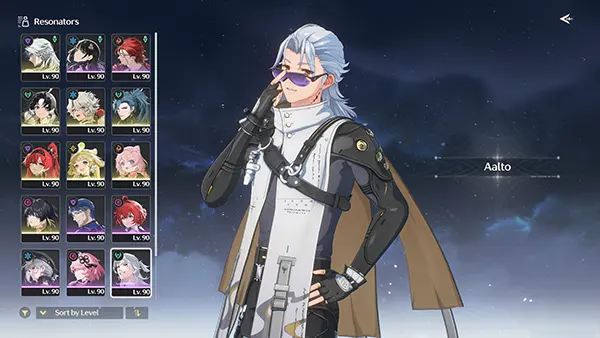In recent years, the rise of action role-playing games (ARPGs) with open-world mechanics and anime aesthetics has reshaped mobile and PC gaming. In 2025, “Wuthering Waves” by Kuro Games emerged as a direct competitor to the long-standing success of HoYoverse’s “Genshin Impact”. While both games share surface similarities, the core gameplay mechanics, combat philosophy, and narrative direction diverge in meaningful ways. This article explores how Wuthering Waves sets itself apart, particularly in terms of its dynamic battle system and unique lore structure.
Combat Mechanics: Fluidity, Responsiveness, and Skill Expression
One of the most immediate distinctions between Wuthering Waves and Genshin Impact lies in the combat design. Wuthering Waves employs a more reactive and fast-paced combat system that rewards timing and player precision. Unlike Genshin’s cooldown-based model with character-switching mechanics, Wuthering Waves integrates perfect dodges, parries, and cancel animations to enhance skill expression.
The inclusion of Echoes—beast-like entities that can be absorbed and summoned—introduces an extra layer of tactical variety. Echoes not only serve as passive buffs or special attacks but also fundamentally alter how a player approaches battles. Timing, Echo synergy, and knowledge of enemy patterns are crucial in high-level encounters.
Furthermore, each Resonator (character) in Wuthering Waves has a clearly defined role but is not restricted to rigid class systems. This encourages experimentation with builds and allows for multiple viable approaches in both solo and co-op content. The battle design leans heavily toward challenge and mastery, reminiscent of titles like Devil May Cry or Sekiro.
Skill-Based Approach vs. Cooldown Management
Genshin Impact relies on team synergy, elemental reactions, and cooldown rotation. While engaging, this model puts a ceiling on individual mechanical skill. In contrast, Wuthering Waves allows for real-time decision-making and reactive counters. Enemies telegraph their attacks, giving players room to perform perfect dodges or interrupt abilities—bringing a more immersive and skill-based feel.
Characters are equipped with counters and dodge-based combat mechanics from the start, making battles more engaging and less reliant on team-building. The focus is on timing and spacing, which appeals to action-RPG veterans. This shift reflects Kuro Games’ desire to appeal to a more technically-inclined audience.
Even boss encounters are more layered, demanding full attention from the player. Mistimed dodges or inability to adapt quickly can lead to punishing outcomes. This makes success in Wuthering Waves feel earned rather than automated by synergy loops or burst combos.
Lore and Worldbuilding: Post-Apocalyptic Themes and Symbolism
While Genshin Impact immerses players in the colourful fantasy of Teyvat—a world built around elemental nations—Wuthering Waves presents a bleaker, more grounded universe. Set in a post-apocalyptic environment recovering from a catastrophic event known as the “Lament”, the game’s story explores trauma, memory, and the human will to survive.
The city of Jinzhou and the surrounding lands are filled with ruins, corrupted lifeforms, and lost knowledge. Players step into the role of Rover, a mysterious character awakened from stasis with no recollection of their past. This narrative hook allows for gradual discovery, layered storytelling, and philosophical undertones around identity and collective suffering.
Moreover, the game features encoded documents, memory fragments, and character backstories that reward exploration. The lore is not just handed out—it is uncovered, pieced together, and often subjective, which contrasts sharply with Genshin’s more linear storytelling format.
A Story Rooted in Psychological Themes
The emotional depth in Wuthering Waves is more subtle and introspective. Rather than focusing on grand adventures or gods versus mortals, the story prioritises individual recovery, loss, and moral ambiguity. Characters often grapple with existential questions, blurring the line between heroism and survivalism.
The concept of “resonance”—which connects the characters to powerful abilities and also ties into the memory of the world—serves as both a gameplay mechanic and a metaphorical theme. Memory loss, reconstruction of history, and dealing with the aftermath of destruction are present throughout the game’s side quests and major arcs.
This design choice allows the narrative to resonate (pun intended) with players on a more mature, emotional level. It invites deeper interpretation and discussion, lending the game a philosophical undertone often missing in anime-style ARPGs.

Progression Systems and Character Development
In terms of progression, Wuthering Waves aims for long-term investment rather than short-term gratification. Characters grow through multi-tiered systems, including Forte upgrades, Resonance Chains, and Weapon Resonance. This complexity allows players to fine-tune performance based on playstyle rather than simply stacking power levels.
Unlike Genshin’s rigid constellations and artefact RNG system, Wuthering Waves provides more flexibility. The Echo system, weapon synergy, and character specialisations open up room for creativity without locking power behind inaccessible drops or overly grindy loops.
The game also features more generous daily content, energy mechanics, and progression curves. Kuro Games has taken a measured approach to monetisation, focusing on accessibility rather than pressure. Limited banners exist, but the overall grind is less punishing, especially for casual players who still want to experience endgame challenges.
Freedom in Build Crafting and Exploration
Another key difference lies in how much freedom players have in building characters. Wuthering Waves avoids strict meta constraints by allowing customisation across multiple axes. Echoes, weapons, and Resonator stats can be adapted to various situations.
This system promotes experimentation and rewards those who engage with game mechanics deeply. Whether players prefer burst damage, defensive tactics, or sustained pressure, they can design a Resonator accordingly without falling behind in content.
Exploration also ties into progression. Secret bosses, hidden Echoes, and interactive world puzzles are integrated directly into the upgrade loop. This makes exploration feel meaningful, rather than a disconnected side activity. Every discovery has potential gameplay implications.